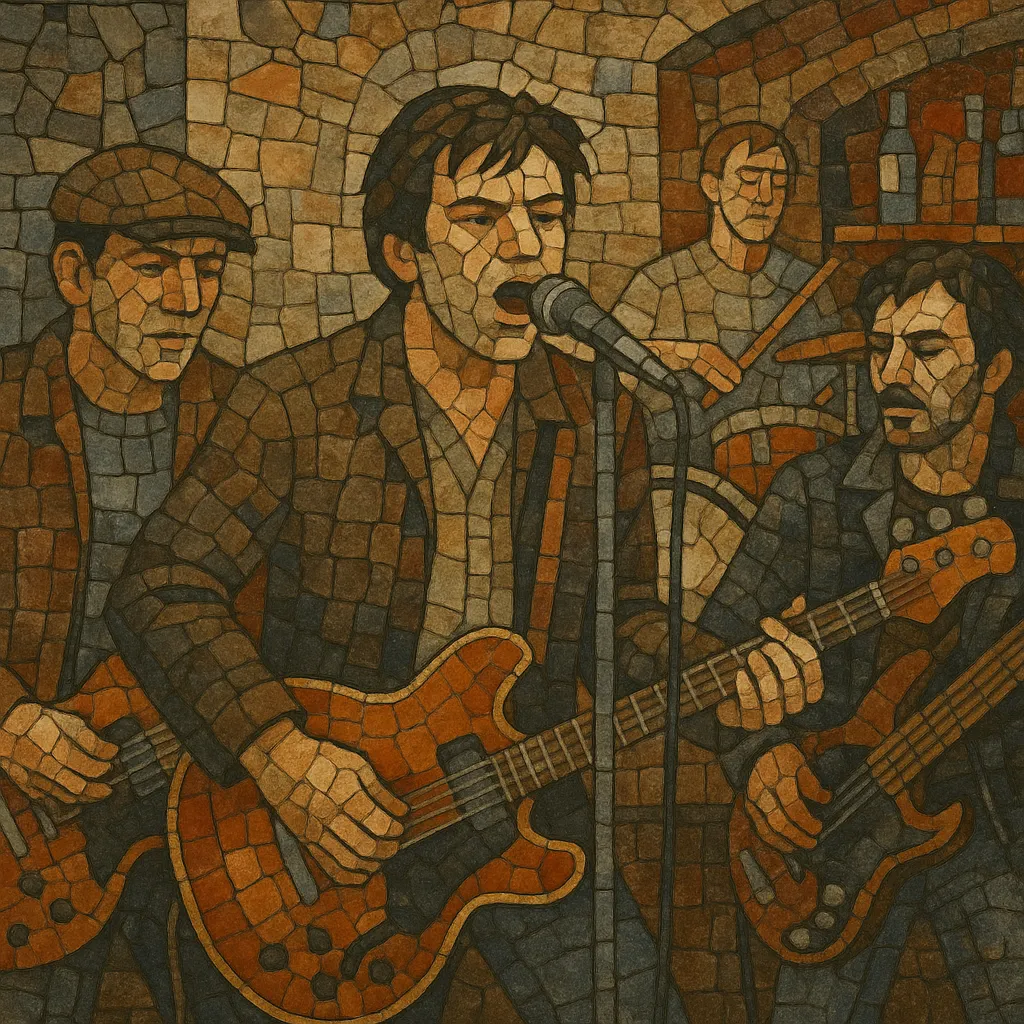Pub rock is a back-to-basics British rock movement that took shape in small bars and clubs, emphasizing tight live playing, unfussy songwriting, and a no-frills image. It rejected the theatrical excesses of glam and the complexity of progressive rock in favor of short, punchy songs rooted in 1950s/60s rhythm & blues, rock and roll, country rock, and rockabilly.
Built around the UK pub circuit, bands played at close quarters to the audience, with modest sound systems and minimal stage production. The result was a raw, energetic, and highly danceable sound—often driven by 12‑bar blues structures, shuffles, boogie grooves, and jangly or crunchy guitars—that celebrated the immediacy of live performance and set the stage for UK punk and new wave.
Pub rock emerged in London and the southeast of England in the early 1970s as musicians and audiences gravitated toward intimate venues and a stripped-down sound. Drawing on British rhythm & blues, 1950s rock and roll, country rock, and blues rock, early bands prioritized feel over flash, crafting sets that mixed originals with classic R&B and rockabilly covers.
Key pubs and rooms like the Hope & Anchor (Islington), the Tally Ho (Kentish Town), and the Nashville Rooms (Kensington) became hubs for this circuit. The close proximity to the audience encouraged high-energy performances with minimal gear, helping define the genre’s down-to-earth aesthetic.
By the mid-1970s, groups such as Dr. Feelgood, Brinsley Schwarz, Ducks Deluxe, Kilburn and the High Roads, and Kursaal Flyers shaped a recognizable scene. Their recordings were typically cut live or with few overdubs, preserving the grit of their sets. Independent labels and entrepreneurial managers fostered a pragmatic, DIY attitude that would soon prove pivotal for the next wave of UK guitar music.
Pub rock’s insistence on brevity, immediacy, and affordability provided the blueprint for UK punk. Bands like Eddie and the Hot Rods blurred lines with faster tempos and more aggressive attack, while alumni of pub rock outfits—Joe Strummer (The 101ers → The Clash), Ian Dury (Kilburn and the High Roads → Ian Dury & The Blockheads), and Nick Lowe—moved directly into punk/new wave ecosystems. The scene’s infrastructure (small venues, indie labels, and pragmatic touring) helped launch punk and new wave.
Although the movement’s commercial peak was brief, pub rock left a lasting legacy. Its ethos—tight songs, live-first performance, and DIY pragmatism—influenced punk rock, new wave, and power pop, and informed later back-to-basics revivals. The “pub circuit” also inspired analogous scenes abroad, most famously the Australian pub rock tradition.


